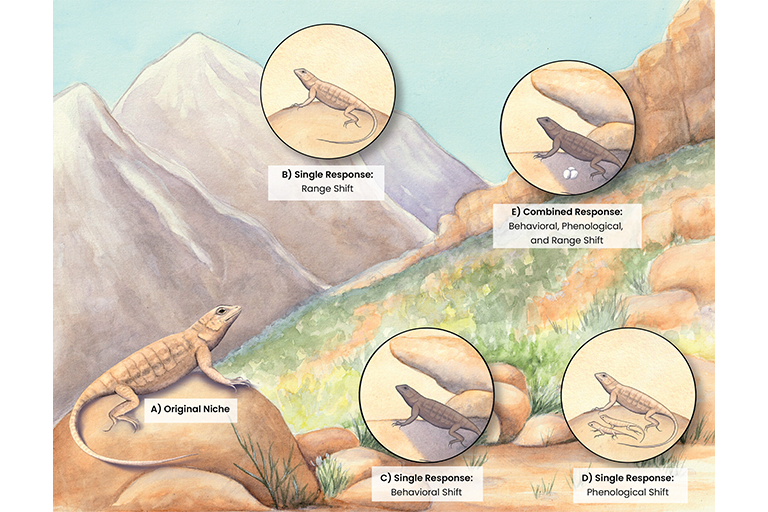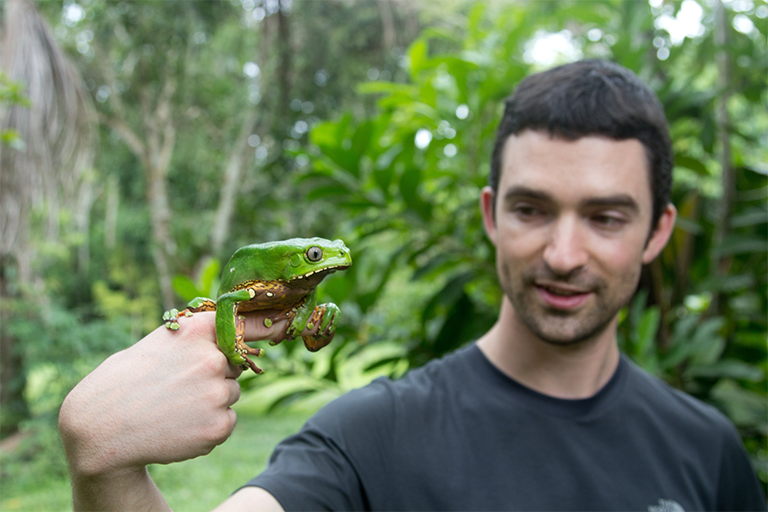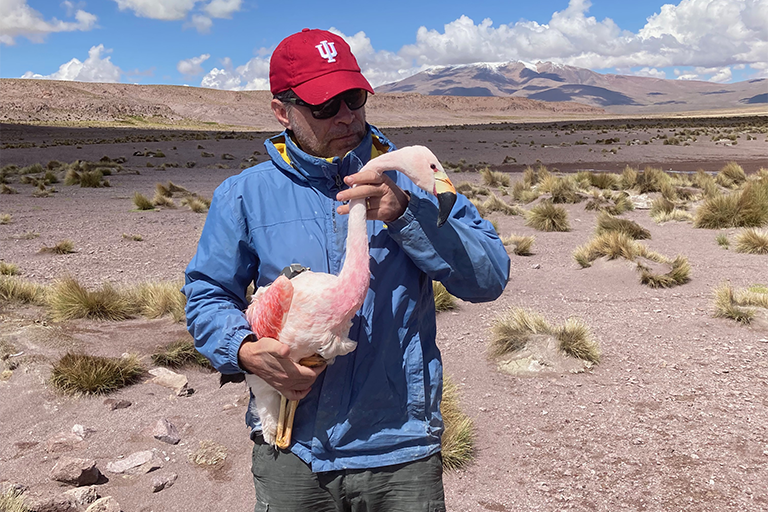As rising global temperatures disrupt established patterns in the natural world, how species respond could be the difference between survival and extinction.
A new framework developed through an interdisciplinary collaboration established at Indiana University takes a close look at the strategies available to plants and animals in response to a changing climate as well as how those responses may interact with each other.
With so many vulnerable species, the framework, recently published in Global Change Biology, could help researchers and conservation managers assess extinction risks with greater accuracy and better allocate resources to ensure plants and animals continue to survive and thrive.
Authors of the study include Indiana University researchers Jen Lau and Adam Fudickar as well as Ranjan Muthukrishnan, of St. Olaf College, Alex Jahn, of Oregon State University, and Tara Smiley and Pascal Title, of Stony Brook University.
“While many studies highlight the array of strategies individual species are employing in response to climate change, few are considering interactions among multiple responses of species,” said Muthukrishnan, an assistant professor of biology at St. Olaf College and former research fellow with the IU Environmental Resilience Institute. “This framework helps us think about these bigger, more complex questions that can determine whether a species survives under climate change.”
No plant or animal is an island—not even the ones confined to islands. In every ecosystem, each living organism has a role, or niche, that supports the health of many other species. Therefore, different species responses to climate change can have vast implications for the survival of other organisms.
“For example, a tree species may be able to handle 10 to 15 degrees of warming, but its pollinator may only be able handle 2 degrees of warming,” Muthukrishnan said. “In a warming world, the tree is either going to go extinct or is going to have to respond using a mix of strategies to compensate for its vulnerable pollinator relationship.”
Species have three primary options in response to major environmental shifts. They can adopt new behaviors, such as spending more time under shade during the hottest times of the year. They can shift their range, such as moving to higher latitudes or higher altitudes that are generally cooler. Or they can change the timing of major life cycle events, such as migration and reproduction, so they happen when conditions are cooler.
Instead of going all-in on one strategy, species can also deploy a mixture of the three to boost their odds of survival.
The challenge of responding to changing environmental conditions is even more complicated when species rely on their ecological neighbors, whose responses may prove beneficial to some and detrimental to others. While developing their framework, the researchers accounted for scenarios when different responses might allow closely associated species like plants and their pollinators to respond in parallel and maintain their relationships. They also considered scenarios when responses might come with drawbacks, such as a species that moves to a cooler location only to face new competitors or predators.
“Some responses may be viable in the short term, but lead to dead ends in the long term,” Muthukrishnan said “We need to take all of these interactions into account.”
The study emerged from a working group of biologists and ecologists established in 2018 at the IU Environmental Resilience Institute focused on movement ecology, or how organisms move across the landscape—especially in response to changes in the environment.
Research fellows and faculty at the institute met regularly to discuss ideas and share knowledge with the group.
“This project was a pretty organic outgrowth of the conversations that we were having,” Muthukrishnan said. “It only came about because people from different backgrounds were together in a room. It was really exciting to be a part of.”
About the Environmental Resilience Institute
Indiana University’s Environmental Resilience Institute connects a broad coalition of government, business, nonprofit, and community leaders to help Indiana and the Midwest better prepare for the challenges of environmental change. Together, we integrate research, education, and community to create environmental resilience and climate solutions—building a more sustainable, equitable, and prosperous future. Learn more at eri.iu.edu.






